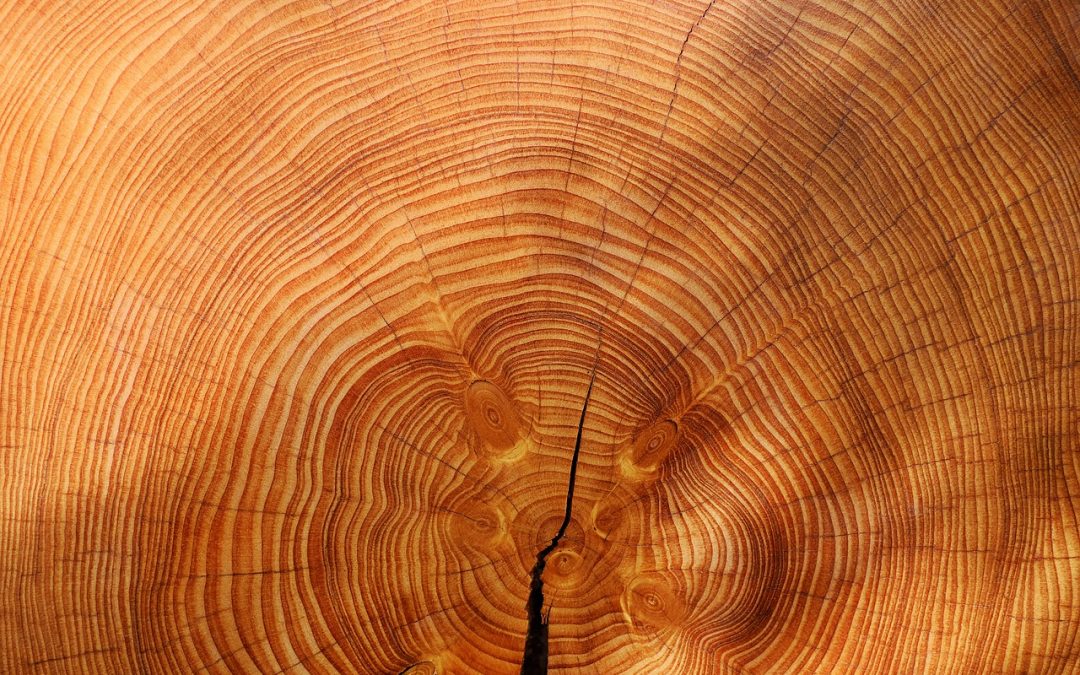Morocco is renowned for its unique woodworking, and exotic woods are a key component of this craft. From cedar, oak, and pine to the rarer varieties of exotic wood species such as ebony, olivewood, and palisander – these hardwoods provide Moroccan artisans with materials that enable them to create stunning works of art. This article will explore why these particular woods have become so popular in Morocco and what makes each one stands out from the rest.
As an expert on exotic woodworking, I’ve noticed that Moroccans have long been drawn to using different types of woods in their projects due to their ability to enhance the beauty of any piece they work on. Cedar is known for its versatility while oak provides strength and durability. Pine has a distinct grain pattern which adds character and texture to a project but when you venture beyond those three staples there’s a world of possibilities waiting to be explored.
The use of exotic woods like ebony, olivewood, and palisander gives Moroccan craftsmen the freedom to express themselves creatively by combining contrasting colors or creating intricate patterns within designs. Even if it’s furniture, flooring or accent pieces – every item made with these special woods carries a sense of uniqueness that can’t be replicated anywhere else in the world.
Cedar Wood
Cedar wood is an exquisite, durable, and versatile choice for crafting furniture or other items. Its rich color and distinctive grain provide a unique look that stands out among other woods. Even if used in French-style joinery, traditional Moroccan craftsmanship or modern design styles, cedar provides an unmistakable presence of refinement and luxury to any room.
When it comes to using cedar wood in woodworking projects, there are several things to assess:
- Grain: Cedar has a straight grain pattern with knots scattered throughout the board. This gives the final product a classic appearance that stands out from other woods.
- Color: The natural hue of cedar ranges from light tan to reddish brown depending on the type of finish applied. It can be stained for added depth and character.
- Durability: Cedar is highly resistant to splitting, warping, cracking, and splitting even when exposed to extreme temperatures and humidity levels over time.
- Workability: Cedar is easy to work with hand tools as well as most powerful tools such as routers, sanders, and saws for shaping individual pieces into beautiful works of art.
From intricately crafted cabinets to sleek end tables, selecting cedarwood ensures your project will stand apart from all others – defying expectations while exuding classiness and elegance simultaneously. Cedar’s durability makes it ideal for both indoor and outdoor applications; its rustic appeal lends itself perfectly to furnishings intended for use outdoors in harsh weather conditions without fear of damage or decay due mainly to its high resistance properties against water rot, termites, mold/mildew, windy climates, and sunlight exposure.
Pine Wood
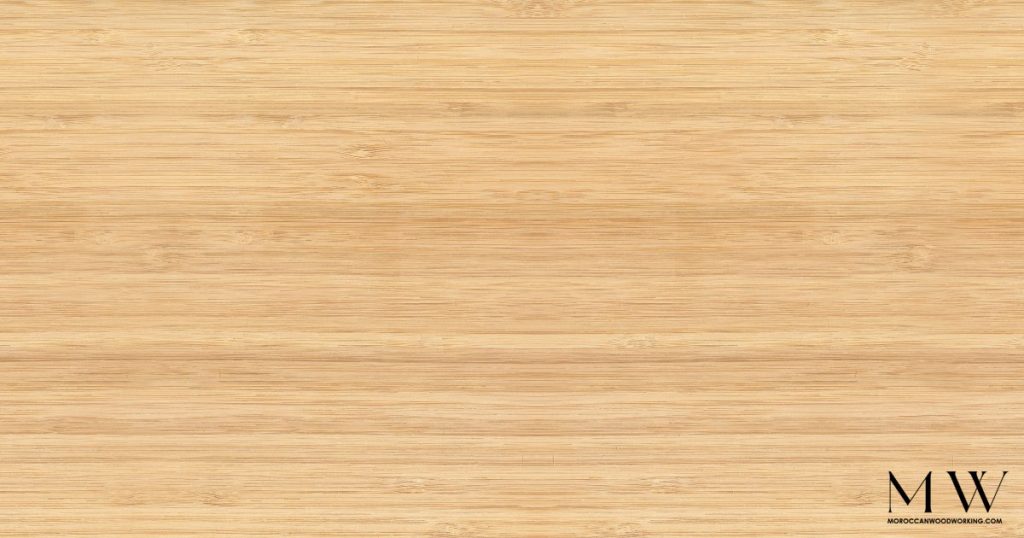
A vast majority of Moroccan woodworking is done with pine wood, a type of coniferous softwood. Pine lumber has been used for centuries in the nation and is now the most commonly available exotic species of wood there. With proper care, pine lumber can last decades or even centuries if treated properly.
Pine tools are easily found in Morocco due to the abundance of pine trees throughout the country. Tools from traditional sharpening stones to modern power tools such as jigsaws and drills make it easy for any skill level to work with this versatile material. Moreover, many techniques have been developed over time specifically for working with pine which can be difficult without knowledge of these methods.
The finishing touches on a pine piece often involve varnish or shellac applied after sanding down rough edges and removing splinters. This helps protect the surface while enhancing its natural beauty by bringing out color variations within the grain pattern.
Oak Wood
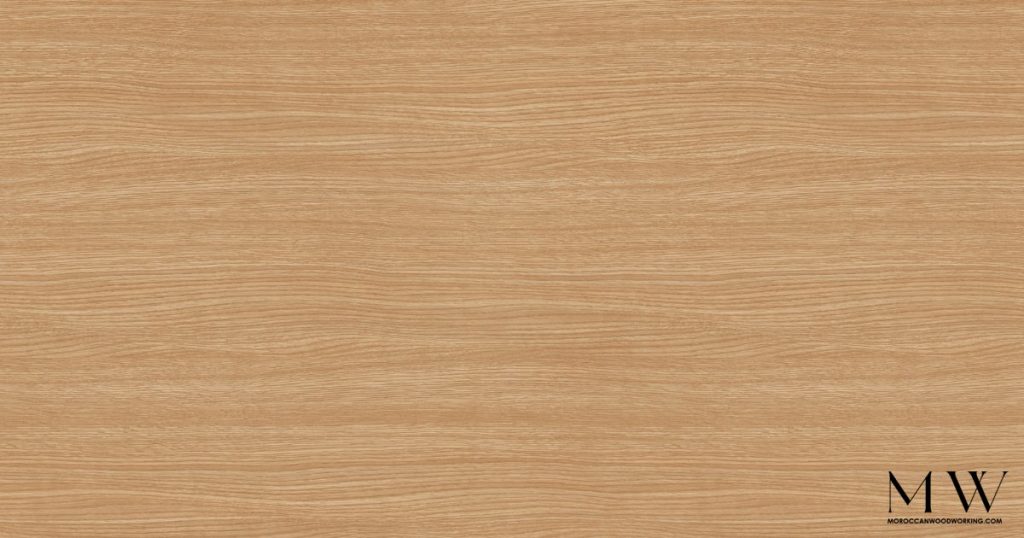
Moroccan woodworking artisans think about oak wood as a highly versatile material, producing exceptional carvings, furniture, and sculptures from it. Its rich grain patterns make it ideal for creating intricate designs that stand out from other exotic woods. Here are a few reasons why oak woodwork stands out:
- Strength – Oak is an extremely durable material which makes it perfect for producing long-lasting pieces of art. It can easily be worked into intricate shapes without compromising strength or sturdiness.
- Versatility – Oak has a wide range of uses, from crafting intricate inlays to carving beautiful sculptures.
- Visual Appeal – The deep red tones and complex grain pattern of oak give it a unique look that draws attention wherever you place it.
Even if you find you’re looking for something bold or subtle, there’s an oak design just right for any space! With its natural durability and timeless appeal, this classic material brings elegance and style wherever it goes!
Thistle Wood
Thistle wood, also known as Thuya thistle wood, is one of the most unique and highly sought-after woods in Moroccan woodworking. This rare species of tree grows exclusively in Morocco’s Middle Atlas Mountains and accounts for about 1% of all exotic wood used in furniture making. Its popularity stems from its mesmerizing swirl pattern that makes each piece distinct and adds a magical touch to any handcrafted item.
The wood has an appealing honey-amber hue with tones ranging from creamy white to dark brown or black. It’s strong yet lightweight, which makes it perfect for crafting intricate pieces like tables, lamps, chairs and cabinets without compromising on strength or stability. The natural oils found in Thistle Wood make it resistant to rot, mold, and pests – letting your creations last longer even when exposed to extreme temperatures or humidity levels.
But perhaps what makes this type of wood even more special is the way it can transform a space into something breathtakingly beautiful. From traditional artisans’ workshops to chic modern homes – Thistle Wood gives off a vibrancy that captivates anyone who sets their eyes upon it. If you use it for decorative accents or larger projects such as kitchen countertops – it lets these exquisite materials bring life to any room with its stylish charm!
Juniper Wood
Juniper wood is one of the most popular exotic woods used in Moroccan woodworking. Its beautiful grain and unique characteristics make it a frequent choice for furniture makers, resulting in stunning pieces that are sure to be conversation starters. Here’s what you need to know about this special material:
- Juniper has an exquisite warm brown tone with occasional dark streaks throughout its surface. The beauty of juniper furniture can really add character to any space due to its vibrant appearance. It has excellent durability, which makes it a perfect choice for both indoor and outdoor settings.
- It is extremely durable, making it ideal for both indoor and outdoor use, even in harsh climates or high-traffic areas. This means that your furniture will last you many years without having to worry about wear and tear.
- It’s lightweight but still strong enough to withstand everyday use, so you won’t have to sacrifice comfort for style when creating Moroccan juniper pieces.
- With proper maintenance, such as regular cleaning and waxing, juniper wood can stay looking brand new for decades – giving your home an elegant touch of freedom from the ordinary!
Whether you’re looking for a statement piece or something more subtle, there’s no doubt that incorporating some juniper into your next project will turn heads!
Hazelnut Wood
Hazelnut is an ancient tree species that has been used for centuries in both furniture-making and decorative purposes. It’s hard yet pliable texture makes it ideal for intricate carving and turning techniques employed by Moroccan craftspeople.
Hazelnut varies from light brown to dark red in color, with each piece having its own individual grain pattern. This color variety enables the craftsman to create truly unique pieces of furniture or artwork, making use of this beautiful material’s special characteristics. Furthermore, to its aesthetic beauty, hazelnut is highly durable and resistant to pests and decay – perfect for long-lasting items such as tables and chairs.
When crafting with hazelnut wood, Moroccan woodworkers often employ traditional techniques such as dovetail joints, mortise & tenon joinery, and laminating layers together using glue or resin. Moroccan woodworkers are renowned for their skillful use of hazelnut in creating stunning works of artistry that can be incorporated into any home decor style – whether modern or classic. With its ability to take on different finishes, shapes, and sizes depending on the desired outcome. Hazelnut is one of Morocco’s most sought-after woods when it comes to customizing furnishing solutions or producing high-quality handmade gifts.
Walnut Wood

Today, this precious hardwood is still employed by master craftsmen in Morocco to produce stunning pieces that combine traditional motifs with modern design elements. Walnut wood is known for its durability, strength and beautiful coloring which range from light browns to deep chocolate hues. It can be carved into all sorts of shapes, making it perfect for creating complex patterns found in many classic Moroccan designs such as arabesques or geometric shapes.
Furthermore, because of its density and hardness, walnut lends themselves perfectly to more detailed sculptural works requiring precision cutting tools such as chisels or saws. These characteristics have resulted in truly magnificent creations over time, ranging from ornate cabinets and armoires to intricate sculptures depicting scenes from nature or folklore.
When considering what type of woodwork, you’d like done for your home or business space, assess using walnut wood – not only will it add warmth and character to any setting but provide years’ worth of enjoyment through its timeless beauty.
Mahogany Wood
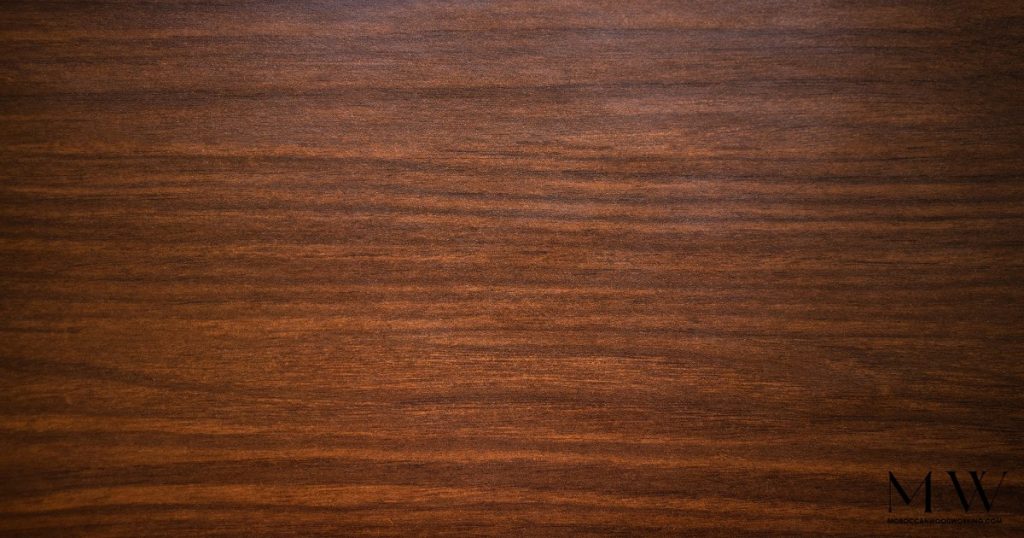
Mahogany is a unique exotic wood that is often used in Moroccan woodworking. Its natural reddish-brown color and fine grain make it an ideal choice for creating furniture with an elegant finish. The use of mahogany wood adds richness and warmth to any decorating style, making it one of the most popular woods among Moroccan craftsmen.
Before applying any finishing touches, such as staining or varnishing, it’s vital to sand the wood down smoothly. This help prevents imperfections from showing through on the final product. It’s significant to seal all edges properly so they don’t become exposed over time due to humidity changes or weathering. Besides, using filler, when necessary, can help fill in small cracks or gaps between boards that may occur during the construction process.
One great advantage of using mahogany is its ability to take stains easily without needing too much preparation beforehand. This means you can customize your piece quickly and easily by simply selecting a stain shade that complements your existing room decor or desired look. Mahogany takes paint well if you’re looking for more colorful options than just darker shades of stain. In case you choose to go with a light or dark hue, this type of wood looks stunning no matter what kind of finish you decide on!
Lemon Wood
The use of exotic woods such as lemonwood in Moroccan woodworking creates a unique and captivating beauty that is unparalleled. With an almost fluorescent yellow hue, this type of exotic wood species has long been used to craft exquisite furniture pieces, fixtures, doors, and other popular items. As a result, mastering techniques on how to best utilize them for woodworking projects takes skill and finesse.
Moroccan artisans have perfected their methods over time when working with exotic types of wood like lemonwood. The first step involves cutting the pieces into small strips or blocks using various tools depending on the desired shape or size. Then those pieces are sanded down until they become smooth before being joined together through intricate joinery techniques – often without nails or screws.
Lastly, after all the hard work is done, it’s time to finish off the piece by adding something special: colorful paint or even natural oils and waxes that bring out its true beauty while providing protection against wear and tear over time. By combining traditional methods of construction with modern finishing techniques, Moroccan artisans create stunning works of art that last generations!
Olive Wood
The process of working with olive wood requires special techniques and tools; the craftsman must take care to guarantee they are using the right technique and tooling for the job at hand.
The first step in any olive woodworking project is selecting the best piece of wood available. This can be done either by visiting local markets or seeking out certified suppliers online. Once you have chosen your desired piece, it should be cleaned and cut into useful shapes according to your design plan. After this preparatory work is complete, various Moroccan tools such as chisels, saws, planes, drills, and knives may then be employed to create whatever shape or intricacy you desire.
Moroccan artisans have been utilizing the unique qualities of olive wood to bring joy and enrichment into people’s lives since time immemorial; today we continue this tradition through our customers’ own creative works made from this timeless material. As you explore all that olive wood has to offer, keep in mind that no two pieces will ever look alike: each item crafted involves attention to detail along with a bit of luck – making every end product truly unique!
Thuya Wood
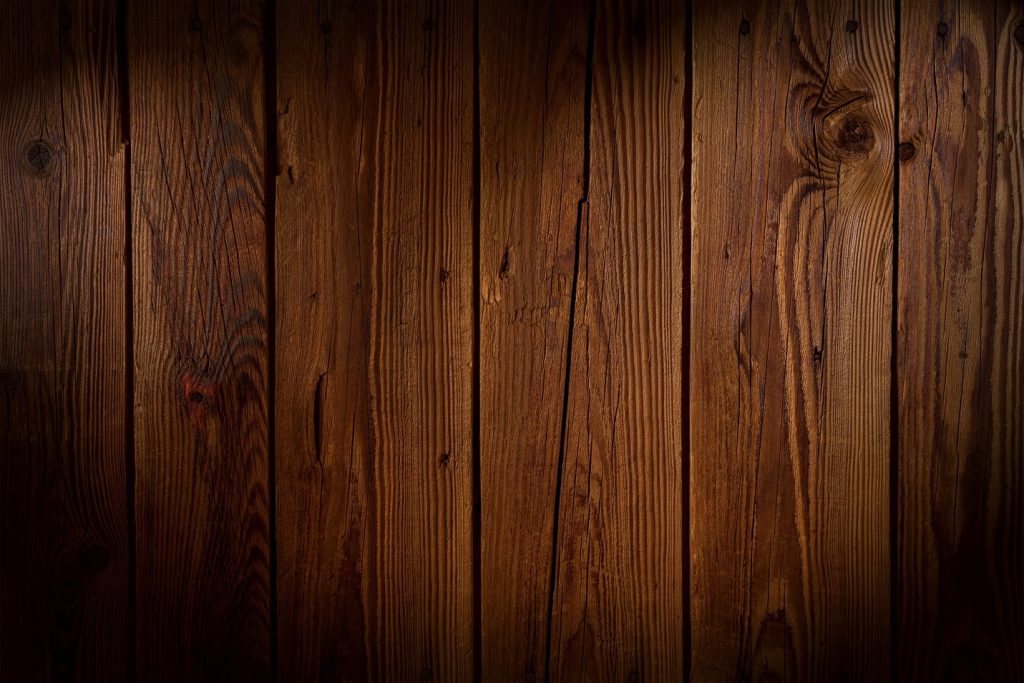
Thuya wood is a type of exotic hardwood found primarily in Morocco. It’s an incredible material to use for furniture, carvings, and other pieces due to its unique coloration, texture, and hardness. Here are some key points about thuya:
- The heartwood is usually yellow or light brown but can range from pale greenish-yellow to deep reddish-brown.
- Thuya wood has a distinctive grain pattern that makes it perfect for intricate carving work.
- Its durability makes it ideal for outdoor projects as well as indoor applications such as tabletops and cabinets.
This beautiful Moroccan hardwood stands out among cedar, oak, and pine woods used in traditional carpentry and furniture making with its eye-catching hue, subtle yet striking grain patterns, smooth surface, and finely carved details.
Thuya itself carries a sense of freedom; even if used outdoors or indoors, it invites appreciation from all who come across it. Its visually attractive appearance combined with its practicality makes thuya wood a great choice for those looking to add character to their home while still maintaining the highest standards of quality possible.
Techniques Used For Moroccan Woodworking
Moroccan craftsmen have perfected techniques for working with both traditional hardwoods species like cedar, oak and pine as well as more exotic species such as olivewood, thuya burl and tamarisk. This can include anything from carving intricate designs or turning thin spindles to cutting complex joints or assembling marquetry panels made from lumber made up of hundreds of tiny pieces.
The results are nothing short of breathtaking; each piece radiates with an aura, unlike any other kind of craftsmanship. From majestic sideboards adorned with graceful hand-carved motifs to delicate tables featuring exquisitely rendered geometric patterns – there really is something here for every discerning taste!
On top of that, to showcasing incredible levels of skill and attention to detail, Moroccan woodworking also offers something else: freedom. The creativity displayed by these gifted artisans allows them to express themselves in ways not possible using many other forms of crafting materials.
Finishing Processes For Moroccan Woodwork
Once the exotic woods of Morocco have been crafted into a piece of woodwork, finishing processes are required to protect and enhance its beauty. Moroccan woodworking incorporates distinctive methods such as:
- Sealing Process: This process involves the application of a natural sealant such as beeswax or linseed oil which gives the final product an additional layer of protection from moisture
- Varnish Application: Applying varnish is often done after sealing to further preserve the wood and provide it with greater resilience against scuffs, scratches, and other minor damage.
- Sanding Techniques: Using sandpaper on a fine grit will help smooth out any rough surfaces and produce a polished finish for your finished product.
- Wax Buffing: After the sanding has been completed, wax buffing can be employed to give even more shine and luster to your project. In the end, these finishing processes must all be applied in order to make certain that your work remains beautiful and functional over time.
The Moroccan woodworking style is truly a unique art form, one that requires skill and precision. The exotic woods used are unlike anything else in the world, each contributing its own unique qualities needed to create something of beauty and strength. Even if it’s Cedar, Pine, Oak or Thistle Wood, every piece of exotic wood used has its own character and lends itself to creating an exquisite final product.
It takes great knowledge and good craftsmanship to be able to work with these materials and turn them into works of art – like pieces from a jigsaw puzzle coming together perfectly. As for the tools used? Well, those too must at times be carefully chosen so as not to damage the delicate grains of the timber. Lastly, there are the finishing processes that give life to any project; this is where true mastery comes in – like finding just the right touch of paint on a canvas.
Exotic woodworking isn’t easy but it is incredibly rewarding when done correctly – you can almost feel the energy emanating from your creations as if they have their own soul. It’s no wonder why Moroccans take such pride in their exotic woodwork!

